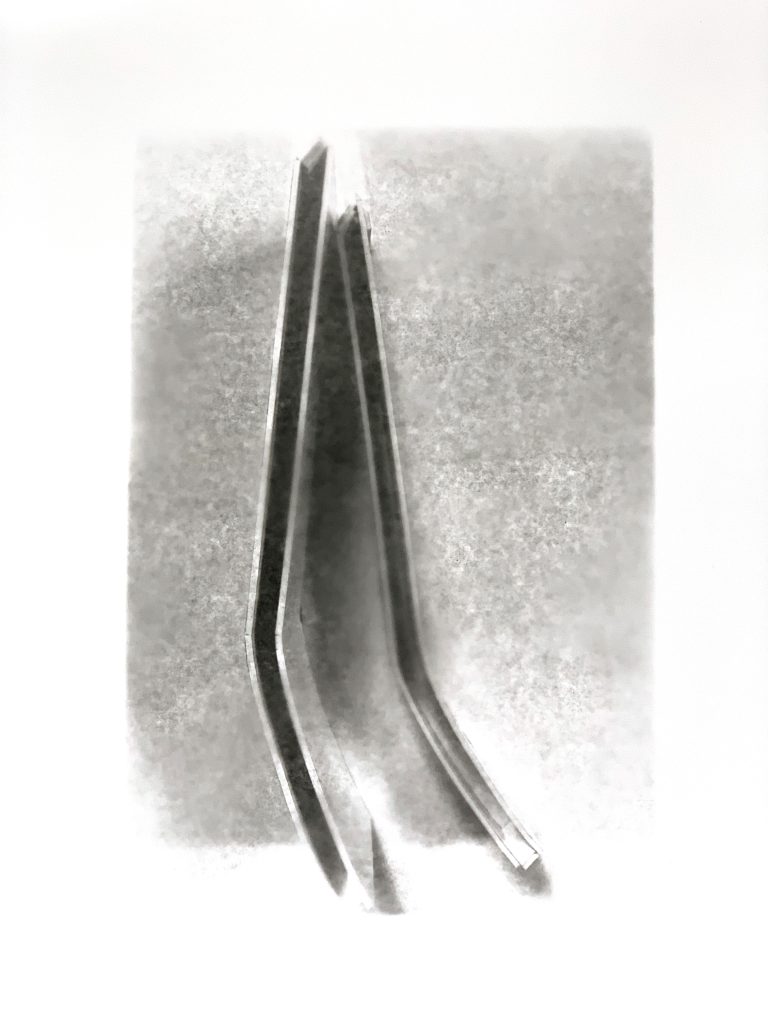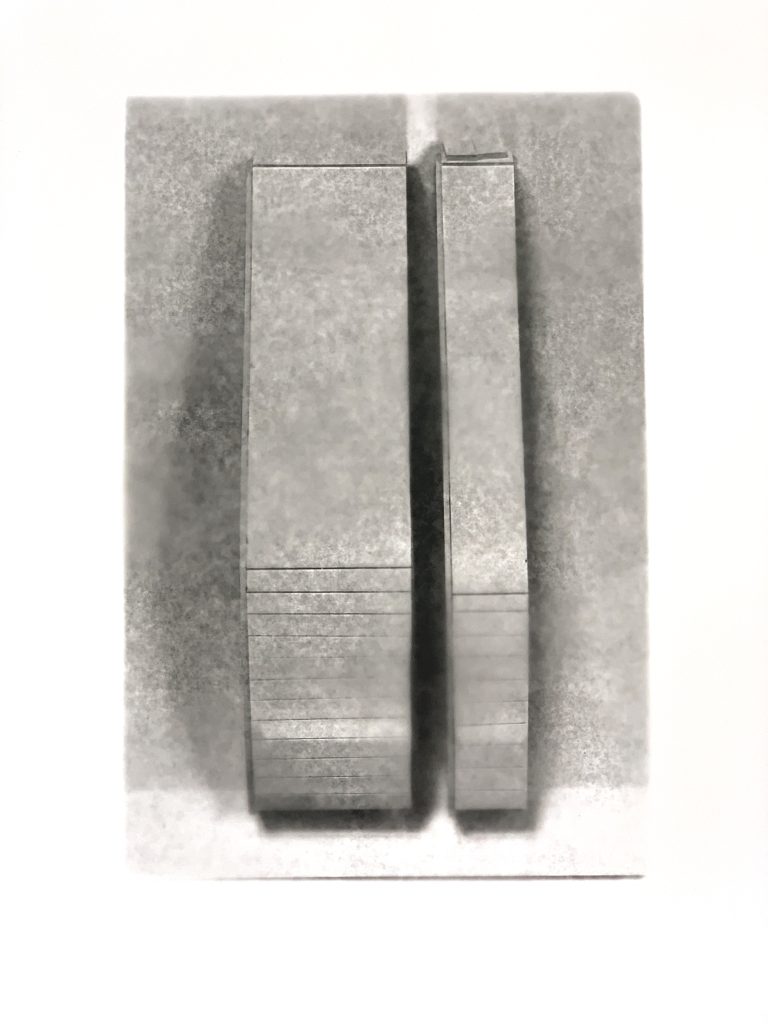Congruous 2021
Saturation Point Gallery, London
In Spring 2020 Saturation Point published a short essay by Anna Fairchild, Lido Memories (Saturation Point archive). Written during the first UK Pandemic lockdown, the essay recalls Fairchild’s visits to a local outdoor Lido and the visual resonances with forms in her sculptures and feelings about the sudden restrictions imposed; a kind of rewinding of somewhat nostalgic reflections on the visual and sensory pleasures of visiting and photographing The Hitchin Swimming Centre near to where she lives in North Hertfordshire.
For the exhibition at Saturation Point, Congruous, Fairchild created a new body of which draws together some of these ideas and her interest in Brutalist concrete structures, in particular the Stevenage telephone exchange, Hertfordshire where she foraged for wild garlic in 2021. It has also been inspired by a personal collection of sedimentary and igneous rocks from the UK and a foraging interest in fungi, lichen and other plants. These structures, surfaces textures and forms have coalesced in the sculptures, creating new, partially recognisable or even unrecognisable objects, which take their inspiration from cast concrete, rock forms and organic skeletal elements.
Alongside the sculpture Fairchild exhibited a series of photograms: Congruous Elements Kit. These photograms are made with paper photographic negatives of the one-off moulds used to cast some of the sculptural elements. They are presented as a record of the planning and construction of the pieces, but are now barely recognisable; the forms have emerged, through the process of making, as things in their own right.
In her 2010 book, Vibrant Matter, A Political Ecology of Things, Jane Bennett expounds her interest and position on New Materialism where the historically accepted hierarchy of things in the world is questioned to give parity to the animate/inanimate; organic/inorganic things we share the world with; disrupting the historical view of humans as the top of a hierarchy of things and, instead proposing that everything is material stuff, which changes and/or moves through time; mostly at a pace imperceptible by human beings; thus the hierarchy is constructed. Bennett proposes that a New Materialist view may allow a new ecology of the world around us to emerge and in doing so create a parity of things.
She states, ‘Vital Materialists will…linger in those moments during which they find themselves fascinated by objects, taking them as clues to the vital materiality we share with them…’ potentially allowing treatment of …’non-humans-animals, plants, earth, even artefacts and commodities – more carefully, more strategically, more ecologically (P.17, 2010).
Fairchild says, ‘It is this lingering over inanimate objects I have always had a fascination with; rocks; fossils; the human built environment, since a young age; growing up in a small village where play consisted mainly of scrambling, climbing, digging and finding things and listening to my father, who was an architect showing me drawings and architectural models. I suppose it is inevitable that I would find Bennett’s ideas a natural conclusion of the way things in the world have always appeared to me’.
It is not too fantastical to say that rocks and the constructed environment materials speak their own language, if one takes time to dwell in the quiet, polyphonic visual echoes. A rock picked up intuitively years before or the side of a brutalist building may increase exponentially as inspiration, whilst on a wild garlic foraging visit to a local town because on the context of time and place. It is within the methodology of Fairchild’s use of the liquid Jesmonite material where a kind of synchronic tearing through time and memory and things in the world, which the work in this exhibition intends to give slices through; from deeply deposited layers in time, emergent in the surface, to not quite nameable animate/inanimate, organic/inorganic forms and structures.
The sculptures invite us to dwell in the imaginative ambiguity of slices through objects, material, place and time, to re-imagine the time we are in.
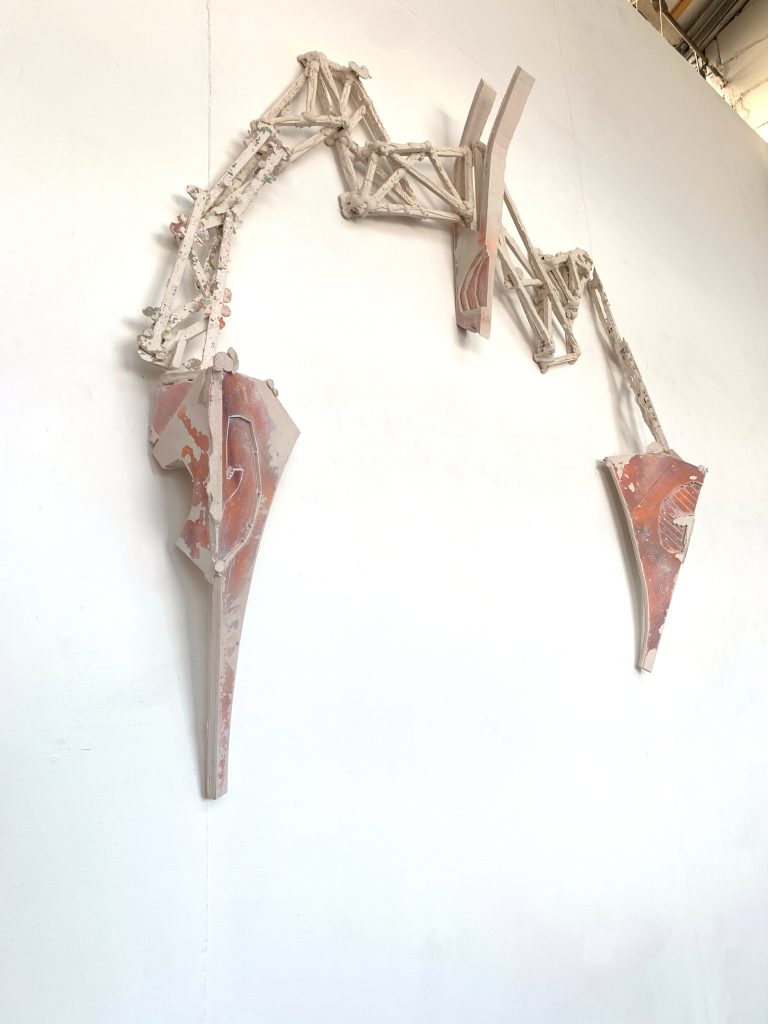

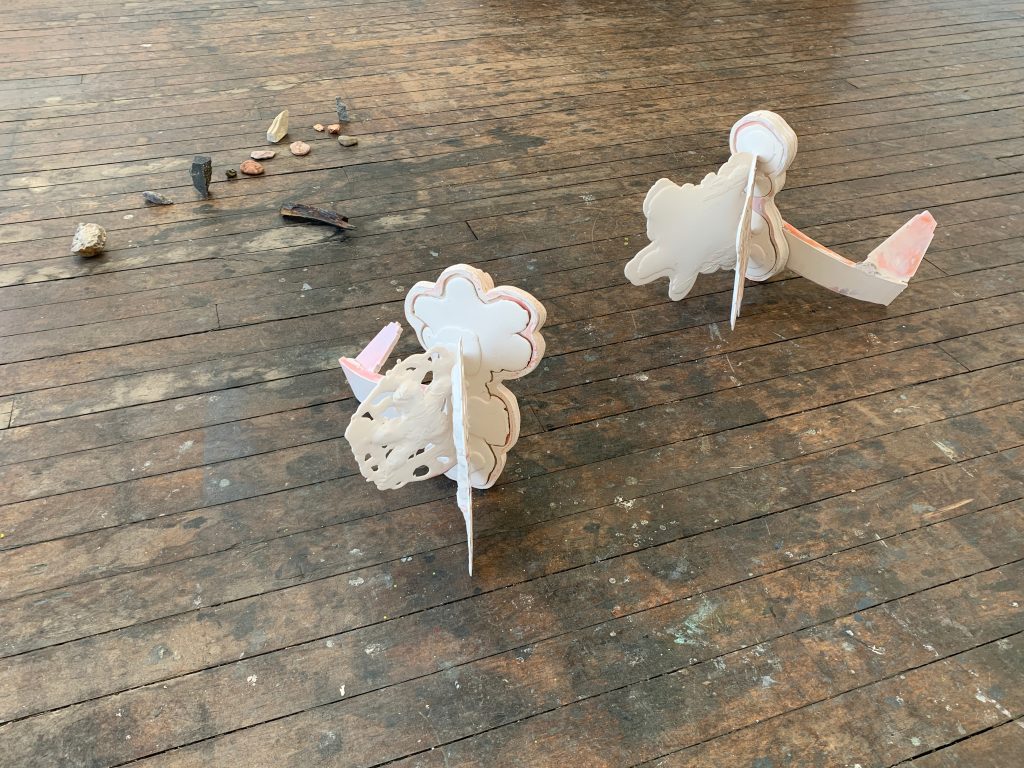
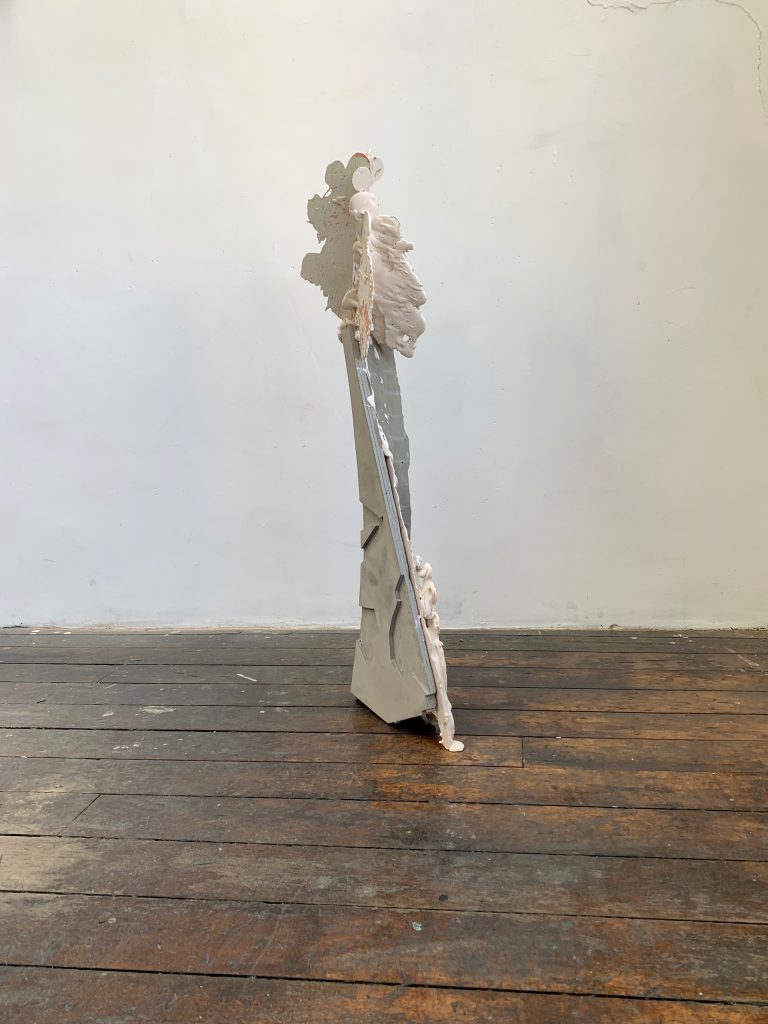
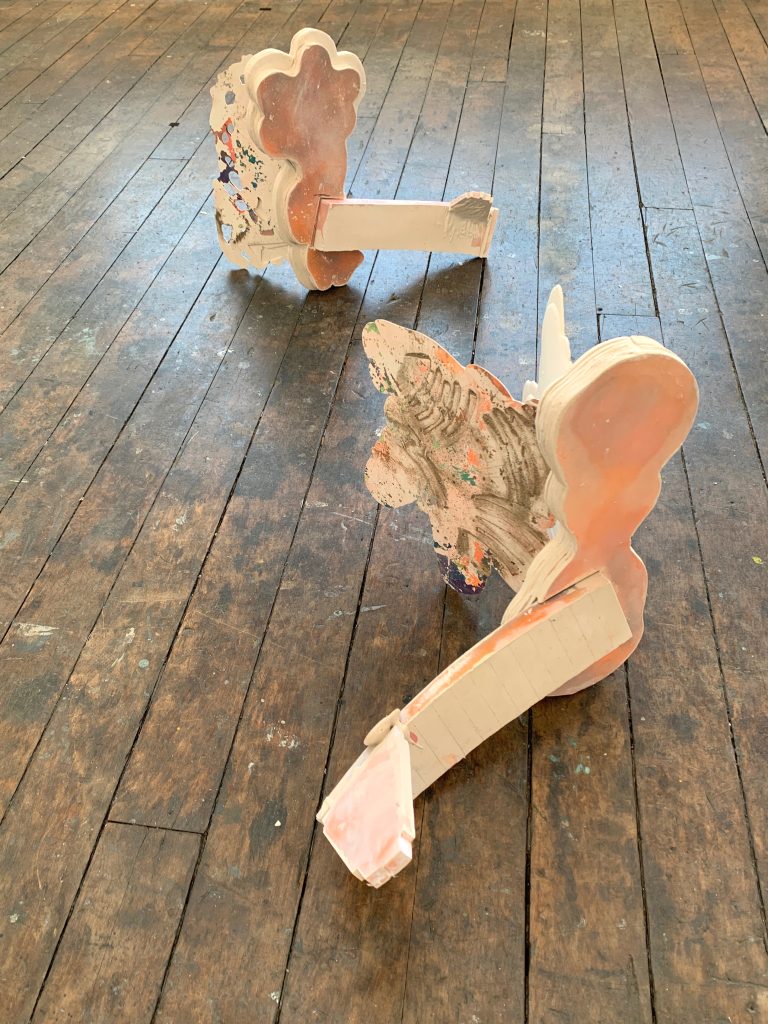
Congruous Elements Kit (Photograms 16×20 inches)
